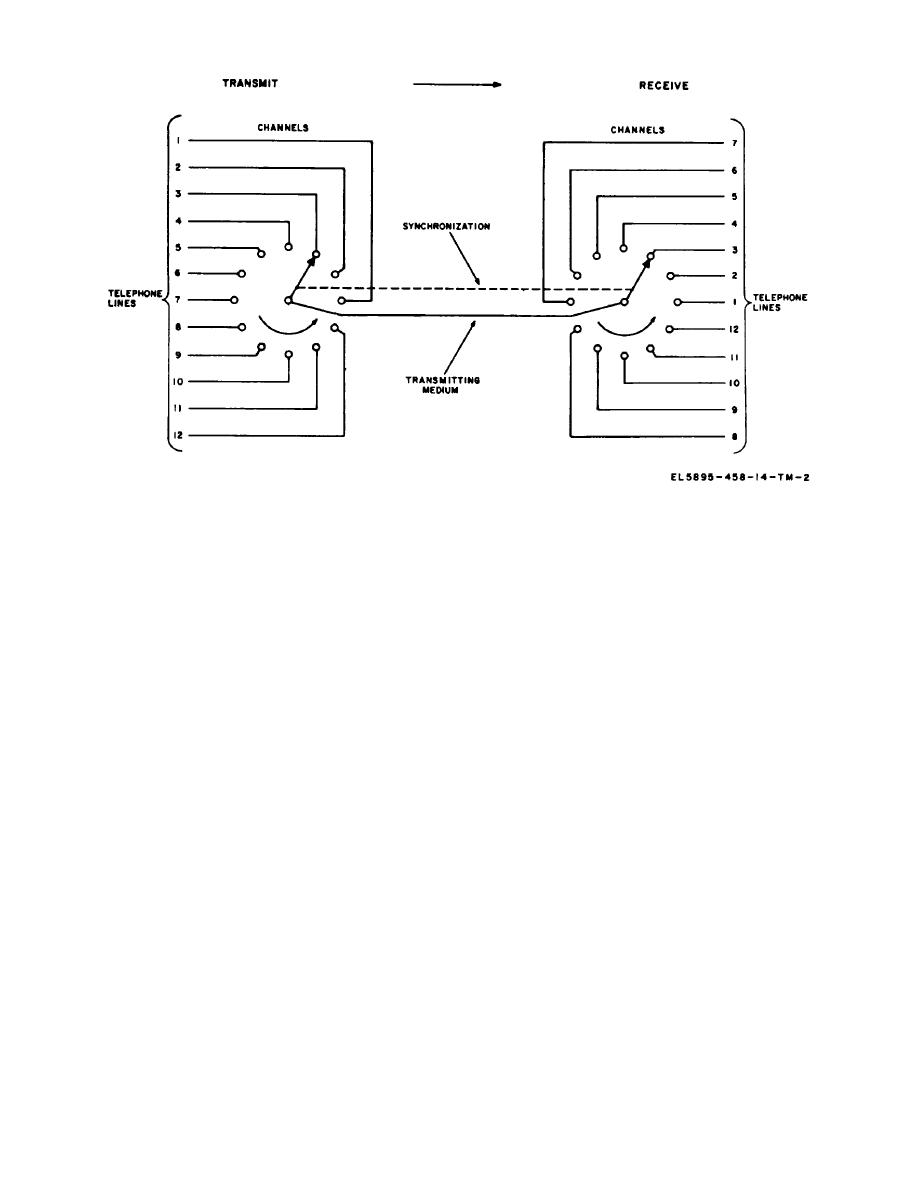 |
|||
|
|
|||
|
Page Title:
Section II. PRINCIPLES OF PULSE-CODE MODULATION |
|
||
| ||||||||||
|
|  TM 11-5895-458-14
Figure 2-2. Simplified 12-channel tdm system.
Section II. PRINCIPLES OF PULSE-CODE MODULATION
In the pcm process, standard amplitude levels are
2-3. General
assigned and are represented by digital codes. The
Pulse-code modulation is a communication technique in
incoming voice waveform is sampled at a high rate, and
which voice, data, or facsimile signals are converted into
each sample is converted to a pulse at the closest
a series of digital pulse codes. Each pulse code
standard amplitude, producing a pulse-amplitude-
represents signal amplitude at a particular instant and a
modulated (pam) waveform. The standard amplitude
series of pulse codes represents a complete waveform.
pulses developed are then measured and converted to a
Since the transmitted signal is in digital form, it is less
binary pulse code for transmission. The pulse codes are
susceptible to noise and distortion buildup over long
decoded at the receiving station and reconverted to a
distance lines, and may be regenerated at repeaters
pam waveform, which is then demodulated to produce
along the route without introducing additional distortion.
approximately the original waveform. As the sampling
2-4. Voice Transmission by Pulse Code
receiver more accurately resembles the original
Modulation
waveform.
(Fig FO-1.)
2-2
|
|
Privacy Statement - Press Release - Copyright Information. - Contact Us |